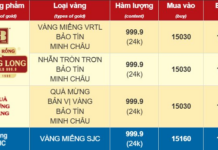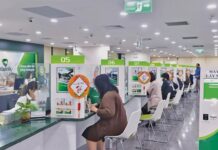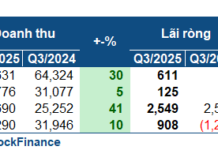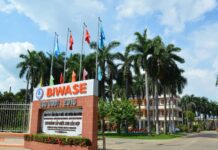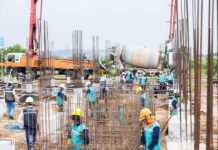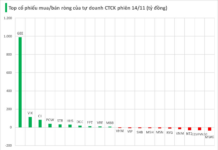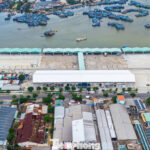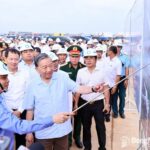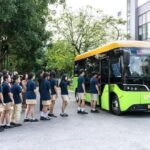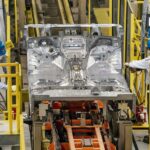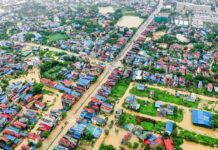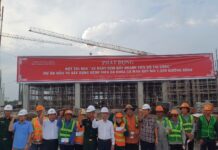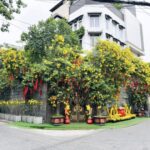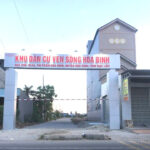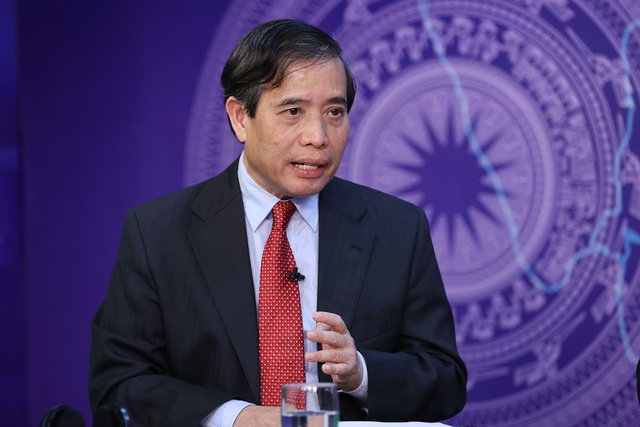
Prof. Dr. Vu Minh Khuong, Lecturer at the Lee Kuan Yew School of Public Policy – Singapore
Cities Need to Truly Evolve, Not Just Expand
On the afternoon of November 12th, the Government’s Information Portal organized a seminar titled “Vietnam’s Socio-Economic Development 2021-2025: Resilience and Breakthrough.”
At the seminar, Prof. Dr. Vu Minh Khuong, Lecturer at the Lee Kuan Yew School of Public Policy – Singapore, noted that from an international perspective, Vietnam is considered a bright spot even during challenging times. Vietnam is expected to progress faster if it continues to learn and effectively leverage global lessons. However, to achieve breakthrough growth, the expert highlighted two key lessons to consider.
First, there needs to be a shift in strategic focus from growth to evolution. While pure growth merely expands scale, evolution represents a leap in development, encompassing synergy, future vision, and a sense of responsibility.
“My research comparing Binh Duong (Vietnam) with Shenzhen (China) reveals that Shenzhen focuses heavily on evolution, constantly upgrading to become a global city. In contrast, despite its size, Binh Duong remains at the ‘extension’ stage rather than true evolution. This is a point we need to pay special attention to,” Mr. Khuong noted.
Second, instead of focusing on resolving bottlenecks, the new approach is to concentrate on the system’s weak points, where breakthroughs can create new development trajectories. Addressing bottlenecks alone keeps the system on its old path, faster but resource-intensive, with uncertain outcomes.
Prof. Dr. Vu Minh Khuong also emphasized that many developed countries focus excessively on the “vertical axis” (resource accumulation, capacity building, high effort) without integrating the “horizontal axis” (resource allocation for real strength; capabilities and motivations driving individual, sector, and local efforts), making it difficult to achieve synergy.
“From Singapore and China’s systemic strength, I see that ‘1 plus 1 equals 11,’ creating immense value and trust. This is something to focus on moving forward,” Mr. Khuong stressed.
In building a developmental state, Mr. Khuong believes the shift should be from an “inner circle” to an “outer circle” model, based on three key value axes:
First, a market economy and private sector require an elite state apparatus for support, like “two hands clapping together.”
Second, deep international integration must emphasize absorptive capacity, creativity, and human resources. Without a strong workforce and limited absorptive and creative capabilities, sustainable development is unattainable.
Third, while infrastructure development is strong, it must be linked, especially in building pillar cities – global cities. Hanoi and Ho Chi Minh City, by developing subway systems similar to Chinese cities within 10-15 years, will attract residents and drive robust growth. Hanoi will lead the Northern region, Ho Chi Minh City the Mekong Delta and Southeast, and Da Nang the Central region.
Aiming for Singapore’s Level, 10-12% Growth is Feasible

Mr. Khuong emphasized that growth is the result of reform efforts. If Vietnam aims to reach global standards, comparable to economies like Singapore or South Korea, 10-12% growth is feasible, though dependent on international context. This will gradually establish a developed nation’s foundation, increasing GDP per capita accordingly.
He also noted that among 29 industries, some could grow 15-20% initially with proper foundational support. He expects each industry to have a development strategy by 2045, from steel to plastics, real estate, with maximum government support.
Prof. Dr. Vu Minh Khuong highlighted that opportunities lie within challenges. The three biggest challenges are institutions, globalization, and human resources.
First, policy-making should be treated as producing a “product,” with testing and expert evaluation before implementation. Successful institutional reform will be the foundation for Vietnam’s strong and sustainable growth.
Second, globalization presents challenges. As a major exporter, Vietnam should focus on increasing added value per export dollar, not just export volume. Identifying strategic partners is crucial, even with China, which should be comprehensively exploited.
“We should establish more large offices in China to thoroughly understand how to approach this market. Failing to leverage a market as large as the US and so close by is a significant disadvantage,” Mr. Khuong emphasized.
Third, limited human resources and weak creativity are challenges. According to Mr. Khuong, establishing free trade zones in major cities, with special incentives for research firms, top-100 global universities, and investment, would rival Singapore’s appeal. This would attract global students and create open ecosystems in Hanoi, Ho Chi Minh City, and Da Nang.
Billionaire Pham Nhat Vuong Unveils Vietnam’s First Electric School Bus, Ensuring No Student Left Behind
Experience the future of transportation with VinFast’s EB 6 electric shuttle service. This cutting-edge, compact passenger vehicle boasts a spacious 19-seat design, ensuring a comfortable ride for all. Enjoy a smooth, quiet journey free from emissions and noise pollution, setting a new standard for eco-friendly travel.
Surpassing 10% Growth: The Ultimate Test of Resilience and Innovation
With the National Assembly’s approval of a 10% or higher GDP growth target for 2026, Vietnam is not merely setting a statistical benchmark but igniting a transformative journey. This ambitious goal hinges on the intrinsic dynamism of businesses, the prowess of governance, and the spirit of innovation and creativity that will define its success.






